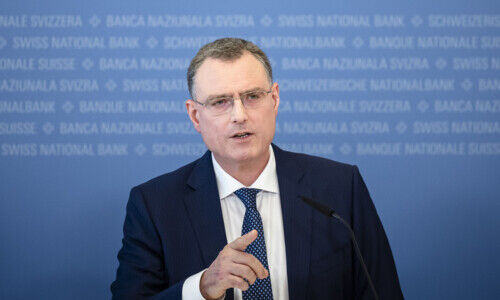Thomas Jordan: SNB «Fulfilled Its Mandate» in Saving CS
The central bank head reaffirmed the role of the Swiss National Bank as a last expedient when things go wrong. Still, the fact that Credit Suisse had to rely on the state is not an easy one to digest.
The Swiss National Bank (SNB) fulfilled its legal mandate when saving Credit Suisse, according to chairman Thomas Jordan.
At the height of the crisis, the central bank had liquidity assistance available to the tune of 168 billion francs (roughly $185 billion) available in three different currencies, a volume made possible by the institution's established processes and advanced planning.
Historic Scale
«The national bank was greatly challenged as a lender of last resort in relation to the Credit Suisse crisis in March 2023», Jordan indicated on Wednesday at a conference in Berne titled «The SNB and its Watchers».
The SNB managed to slow things down by providing the bank with enough liquidity in order for a solution to be found. Subsequently, the central bank also provided significant support for UBS's takeover of Credit Suisse.
No Nationalization
A possible winding up of Switzerland's then second-largest bank was also discussed, as was temporary public ownership (TPO). However, risk considerations were decisive in proceeding with the takeover. «The fragility in the financial markets at the time prompted fears of a destabilization of the financial system should the bank be wound up», Jordan continued. «A TPO was seen as too risky for taxpayers.»
In the case of Credit Suisse, three types of liquidity were made available. The first was conventional liquidity assistance (ELA) and then, based on the government's decree, an additional liquidity lending facility (ELA+). The legal foundation for the facilities was only secured by bankruptcy rights.
On top of that, the SNB provided a Public Liquidity Backstop (PLB) guaranteed by the government.
No Federal Takeover
The SNB has clear legal limits when it comes to maintaining financial stability. It does not have a framework that would allow it to take over banks or dissolve them. The SNB can also not provide any guarantees for client assets or vouch for unsecured liquidity at individual banks.
The central bank already accepts a broad palette of securities and collateral that banks can deposit with them when they need liquidity. That includes private and business mortgages, securities with low credit ratings, securitized loans, and equity.
«Credit Suisse is a clear example of how client asset outflows are much quicker and larger than had been assumed in contemporary regulation. In addition to that, Credit Suisse did not have enough collateral ready that it could provide to the SNB in times of crisis», the SNB chairman continued.
Collateral Requested
Jordan sees three lessons coming out of the Credit Suisse debacle: «Liquidity regulation has to recognize the new reality of potentially much faster and larger outflows of deposits.» The second is that banks need to have enough collateral to pledge to the SNB and other central banks.
The third is that an effective PLB has to be in place for the central banks to provide liquidity to banks experiencing difficulties and who do not have enough collateral. The risks from the PLB, however, are borne by the government and they, together with emergency decrees, should not become part of the SNB's portfolio in the future.
The Big What If?
He aimed his warning directly at UBS and the other three system-relevant banks, Raiffeisen, ZKB, and Postfinance, even if they are significantly smaller. In the case of the now enlargened UBS, the risks would logically be much higher. The levels of liquidity would be enormous and the government would carry the risk of. PLB.
The question then is if Credit Suisse already tested the stress limits of the SNB's capabilities – is saving, splitting, or nationalizing UBS even possible?



























